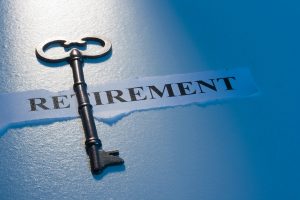 By Tammy Flanagan – January 22, 2015
By Tammy Flanagan – January 22, 2015
As you probably know, federal employees are generally covered by one of two retirement systems: the “old” Civil Service Retirement System or the “new” Federal Employees Retirement System. But FERS isn’t that new any more. It includes many employees who have accumulated 30 or more years of federal service. And recently it’s been updated twice: In 2013 Congress created FERS-RAE (for “revised annuity employees”) and a year later FERS-FRAE (for, get this, “further revised annuity employees”). Employees hired in the past couple of years under the two new systems contribute more than traditional FERS workers toward their basic retirement benefit. But so far, they have the same FERS benefits as other employees hired before 2013.
I rarely hear anyone say that FERS is superior to CSRS, which includes a large defined benefit. But for some employees, FERS can provide a bigger retirement benefit than CSRS. (I can hear longtime readers of this column saying, “here she goes again.”) Sure, if given the choice, many veteran employees would choose CSRS without hesitation. But others just might find FERS is better.
Lets look at some categories of such employees:
People with less than 30 years of federal service or who don’t retire from federal service.
FERS includes full Social Security coverage, which makes it a more portable system for those with prior service in the private sector as well as those coming from a military career. It’s also a better system for someone who may leave federal service before retirement to pursue work outside of government.
Remember, CSRS employees are exempt from paying the Social Security FICA tax and do not earn credits towards Social Security retirement benefits. Social Security benefits are computed on the highest 35 years of FICA-covered employment. If you complete less than 35 years, you will have zeroes substituted for wages for the missing years. This can create a smaller Social Security benefit. And if you retire under CSRS, your Social Security benefit can be reduced or eliminated by the Windfall Elimination Provision and the Government Pension Offset.
Those who work past age 62.
Older employees can often do better under FERS, since they can begin to draw full Social Security benefits at their full retirement age (currently 66, but increasing to 67). Delaying Social Security retirement can allow for a generous increase in benefits for you and for your spouse, if you’re married. In addition, the FERS basic retirement benefit begins to receive cost-of-living-adjustments when you retire past age 62.
Keep in mind that Social Security is tilted towards the low-wage earner: Those who earn less will receive a higher replacement of their pre-retirement wages than those with higher lifetime earnings. For lower salaried employees, this means you may not need as much in Thrift Savings Plan savings to replace your pre-retirement income.
Employees who understand how to invest for retirement.
The key to FERS is the TSP. Many federal employees lack an education in basic financial planning for retirement when they begin their federal careers. But those who know how to manage risk and volatility in their retirement savings have done very well under FERS. There are methods you can use to achieve better results that are not based on gambling on your future retirement or chasing the best-performing fund.
Managing your TSP doesn’t end when you retire. Micah Shilanski, a certified financial planner, says some employees think they’ll be able to use the TSP as a bank account. But it doesn’t work that way. You have to understand how to take money out in retirement while continuing to manage your investments.
Last year, I partnered with Micah to provide online in-depth pre-retirement web-based training. We have a new series coming out next month called Unlocking the Keys to Your TSP. It will take an in-depth look at investment strategies for retirement.
via Unlocking the Secrets of FERS – Retirement Planning – Pay & Benefits – GovExec.com.

